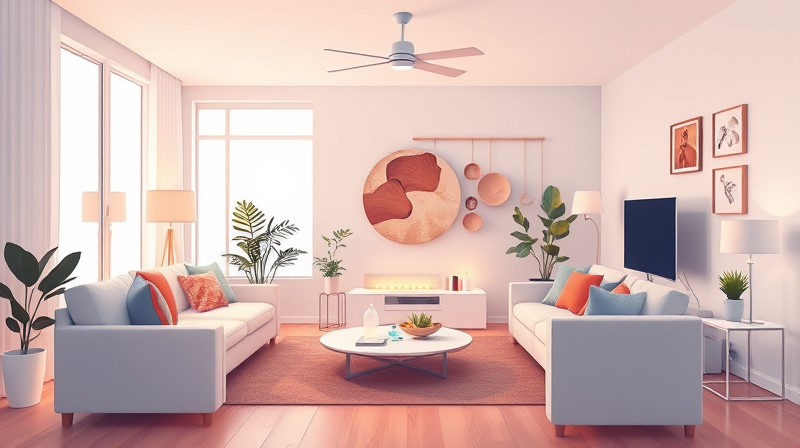Building a smart home might seem intimidating at first, especially if you have a limited budget. However, technological advancements and emerging universal standards like Matter have opened up new opportunities that allow everyone to enjoy the benefits of smart technology. With a little planning and careful selection, you can have a smart home tailored to your needs without risking financial stress.
This guide is designed to help you navigate the process step-by-step while inspiring you to invest smartly in a home automation system that grows with you.
Define Goals and Establish Your Budget
Before you purchase any device, it is important to clearly define what you want from your smart home. Are you looking for a system that increases convenience, enhances security, or improves energy efficiency? Once your goals are outlined, setting a realistic budget helps you decide which features are vital and which can wait. Smart choices today lay a strong foundation for future upgrades.
Remember, starting small and expanding gradually is the key. Instead of buying the priciest devices available, focus on items that offer great value for the money you invest.
Choose Your Ecosystem
One of the first major decisions you need to make is choosing the right ecosystem. An ecosystem acts as the backbone of your setup, ensuring that all devices communicate seamlessly. Selecting one ecosystem early on can save you both time and money.
Some popular ecosystems include:
- Amazon Alexa: Known for its affordability and extensive compatibility with a wide range of devices.
- Google Home: A strong choice for Android users and those looking for intuitive interfaces.
- Apple HomeKit: Perfect for users deeply integrated into the Apple universe.
- Matter: A universal standard that simplifies device compatibility across different brands.
Choosing one ecosystem ensures your devices work in harmony, reducing frustration when adding new technology to your home.
Invest in a Smart Hub or Controller
An essential component of any smart home is the hub or controller. While many devices come with their own apps, using a central hub like the Amazon Echo or Google Nest Hub can streamline your experience. Voice control and group management of devices are just some of the benefits.
In some cases, if your devices support Matter, you might not need a dedicated hub as Matter-certified devices can communicate directly via Wi-Fi or Thread.
Start with Affordable Essentials
When building your smart home, opting for budget-friendly and essential devices is a smart strategy. Begin with basic components and then expand as you become more comfortable with automation. The focus should be on enhancing daily activities without overwhelming you with complex systems.
Some starter devices include:
- Smart Speakers/Assistants: Devices like the Amazon Echo Dot and Google Nest Mini can serve as a central control point, enabling voice commands for an array of tasks.
- Smart Lights: Consider starter kits or affordable Wi-Fi-enabled bulbs to add a modern touch to your living space.
- Smart Plugs: These are great for automating everyday appliances such as lamps or fans, offering a cost-effective way to dip your toes into home automation.
- Smart Thermostats: Automation in heating and cooling can be both convenient and cost-saving by reducing energy bills.
- Smart Security Devices: Begin with a simple indoor camera or a doorbell camera to introduce smart security measures gradually.
User-Friendly Automation
Automation is where the true potential of a smart home shines through. Creating basic routines can significantly enhance your day-to-day life. From setting up a 'Movie Night' scene to automating morning routines, the possibilities are endless.
You can start by linking devices together:
- Scenes: Group lights, music, and temperature controls to work in unison with a single command.
- Schedules: Automate your lighting and heating systems to operate according to your daily routine, saving both time and energy.
- Voice Commands: Seamless integration with popular voice assistants ensures that managing your smart home is always convenient.
Expand Gradually
Once you have the basics in place, you can consider expanding your setup. Add features like motion sensors, contact sensors, or smart locks to further enhance your home’s functionality and security. Gradual expansion not only prevents feeling overwhelmed but also helps you manage your budget more effectively.
As you integrate more devices, ensure they are compatible with your chosen ecosystem to keep your setup smooth and synchronized.
Tips for Keeping Costs Down
Maintaining a budget while building a smart home is achievable with some careful consideration:
- Avoid Hidden Costs: Be cautious about devices that require recurring subscriptions for additional features.
- DIY Installation: Many smart devices are designed for easy self-installation, eliminating the need for professional help.
- Start Small: Prioritize investments that provide immediate benefits and expand gradually as your needs evolve.
Empower Your Everyday Life
In final thoughts, creating a smart home that is both effective and budget-friendly starts with clear planning and smart investments. There is no need to rush or overspend when every step forward makes your life a little easier, a little more connected, and a lot more enjoyable.
By taking your time to understand your priorities, choosing the right ecosystem, and expanding gradually, you set the stage for a technological journey that is both inspiring and manageable. Embrace the simplicity and power of automation at your own pace, and let every innovation in your home improve your quality of life.
This guide aims to empower you to take control of your home environment while staying true to your budget. Remember, your smart home is a reflection of your lifestyle, and every smart addition is a step towards a more connected and efficient way of living.








